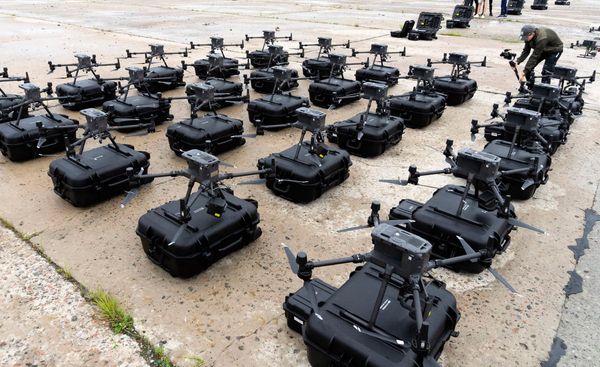
In recent years, many countries have actively promoted electrification transportation vehicles, indicating the electrification of vehicles has become a global trend of the future. While the world is promoting electric vehicles, Taiwan’s government is also trying to keep up, even proclaiming “banning the sales of gasoline motorbikes by 2035” and actively promoting various electric scooter transformation guidance plans, hoping to lead Taiwan’s motorbikes to keep up in line with industrial trends.
However, with the full implementation of electric vehicles, the government is also faced with a rebound from major conventional gasoline vehicle manufacturers. Therefore, in order to cater to the needs of the existing industry, the original plan was changed from the full implementation of electrification to the promotion of “the coexistence and co-prosperity of gasoline & electric powered vehicles”. This said, is such a plan of compromise the remedy for the motorbike industry, or is it poison that hinders industrial innovation and development? The blind spots of “the coexistence and co-prosperity of gasoline & electric powered vehicles” policy and the necessity of electric scooters are analyzed below.

Q1: The government that formerly promoted electric scooters now opts for “the coexistence and co-prosperity of gasoline & electric powered vehicles”. It seems both are subsidized and both industries are catered to. What is the problem?
Taiwan’s motorbike industry is in the face of transformation from “gasoline to electric powered”. In the past, in order to quickly keep up with internationalization and catch up with industrial development, a considerable ratio of incentive investment and preferential mechanisms were formulated to promote economic development, boost investment, and enhance R&D technology. In fact, the success of motorbike industrial transformation depends on the government’s policy guidance attitude.
According to the White Paper on Taiwan’s Electric Scooter Industrial Development, it has been pointed out that the nation’s electric scooter output increased to NT$7.27 billion in 2018, a 145.6% increase compared to 2017. The annual output of electric scooters is expected to exceed NT$10 billion in 2019, a clear indication of the staggering output of electric scooter. With the increase in environmental awareness and technological advancement, not only Taiwan but countries around the world are competing for the market share of electric scooters regarded as the next trillion dollar industry. Taiwan with such a leading edge in technology has a good chance of seizing the global trillion-dollar market and have its place.
In addition, promoting industrial transformation and innovation, making the industry more environmentally friendly, keeping up with the global industry and economic trends, and moving towards smart upgrading are pressing needs for Taiwan’s next generation. The optimization of traditional industries will not only provide young people with more diverse choices and strengthen innovation and momentum of generation alternation, if regional balance can be taken into accounting during the development process, new vitality can be injected into the northern, central, and southern areas to create more development opportunities through industrial momentum. Overall, electric scooters are an inevitable trend and a highly competitive industrial item in Taiwan. If “the coexistence and co-prosperity of gasoline & electric powered vehicles” policy results in diminished development strength, a slowdown in competitive pace, and other countries’ surpassing Taiwan, the policy will just be spoiling the ship for a halfpennyworth.
Q2: Why highlight the development of the electric scooter industry? Why won’t “the coexistence and co-prosperity of gasoline & electric powered vehicles” equality work?
The motorbike industry’s “gasoline vs. electric powered vehicles” is a microcosm of generational competition. In 2019, different brands launched electronic motorbikes. With such diverse development, even the government actively conducted “electric scooter talent training courses”, attracting many mechanics from motorbike garages and second-generation owners of motorbike shops to sign up. This signifies Taiwan’s motorbike industry is currently at the crux of transformation, and the talent sector will naturally with market demand.
It can be seen from the transformation process that electric scooters are breaking traditional business models. Take traditional motorbikes as examples, from upstream regional distribution companies (wholesalers), middle-stream companies engaged in sales in counties and cities (mid-stream suppliers), downstream distributors in towns and townships (distributors), and finally to the bottom traditional motorbike shops (retailers), traditional motorbike stores after layers of exploitation have little profit left. However, with the franchise system, profits from new electric scooters sales directly go back to motorbike stores, breaking the distribution model in the past and making the profit structure more open and transparent.
In addition to the environmental protection and higher energy-saving efficiency of electric scooters and a more friendly business model, smart electric scooters complemented by network technology can enable operators, after-sales service providers, managers, and users and even power change stations and charging stations to engage in transparent communication, while various data are collected to optimize service experience and extend development into shared fleets, digital logistics, and other new business models.
As the industrial model of electric scooters has an advantage over traditional gasoline vehicles in terms of advancement, blindly emphasizing “the coexistence and co-prosperity of gasoline & electric powered vehicles” equality cannot really help gasoline vehicle traders. After all, consumers have their own market elimination mechanism. What the government needs to do is to fully engage in the development of electric scooters and provide guidance to existing motorbike traders and integrate with the electric scooter industry, thereby creating a win-win situation.

Q3: Are electric scooters really more environmentally friendly than gasoline motorbikes? Why does Taiwan’s government encourage electric scooters? What are the disadvantage of gasoline motorbikes?
Air pollution is one of the world’s greatest public health crises. According to the data of Environmental Protection Administration, Executive Yuan, R.O.C. (Taiwan), PM2.5 traffic pollution sources, car and motorbike emissions account for 30 - 37%, other pollution sources account for 32 - 43%, and industrial pollution sources account for 27 - 31%. In Taiwan, traffic pollution sources alone account for up to 30%.
According to data of motorbike exhaust emissions, the existing Phase 6 motorbikes top in exhaust emissions that are hazardous to the human body, including carbon monoxide (CO), non-methane hydrocarbons (NMHC), nitrogen oxides (NOx), and suspended particulates (PM). Even for Phase 7 gasoline motorbikes claiming to be more environmentally friendly, the amount of discharge suspended particulates per kilometer of driving is equivalent to that of cars.

The comparison data in the chart above shows that electric scooters have relatively low exhaust emissions, thus the significantly reduced risk of air pollution. As the level of air pollution-induced disease threats has continuously risen in recent years, pedestrians are exposed to traffic exhaust every day and are subject to extremely high health risks. Clearly, it is imperative for the government to promote electric scooters.
Q4: If the development of electric transportation vehicles is an irreversible global trend? Where does the opportunity lie for Taiwan? What are the advantages?
The whole world embraces low-carbon transportation, and this obviously gives rise to unlimited business opportunities for the transportation industry. Take the most densely populated Southeast Asia for instance, in 2019, the Indian government announced an input of US$1.5 billion (about NT$45 billion) as purchase subsidies for over 1.6 million electric vehicles, including electric scooters, electric tricycles, electric four-wheels, and hybrid electric vehicles; the Indonesian government is also expected to increase its electric scooter quantity to 2.1 million by 2025; Vietnamese automobile companies and the government will also jointly investment US$1.5 billion (about NT$45 billion) on developing electric scooters; the Chinese government is expected to set up electric scooter related standards.
In fact, the leaders of major automobile companies in Taiwan have all mentioned gaining entry into overseas markets, because the scale of total motorbike sales of Southeast Asia and India combined is 40 times that of Taiwan. On the other hand, for Taiwan known as the “kingdom of motorbikes”, there is a complete and mature domestic motorbike supply chain, and Taiwan is an important ICT industry export country in the world, which is the main industry engaged in electric scooter manufacturing. This is an indication that Taiwan already has a lead edge in the world. It should even form a “national team” targeting the global markets, which will not only enable Taiwan to develop into a country of smart electric scooters, but will also promote the sustainable development of Taiwan’s motorbike industry.
On top of this, in the field of ordinary heavy-duty electric scooters, it is estimated that Taiwan is leading the global traders by 3 - 5 years. Now is the time to take advantage of the opportunity to strike while having the edge, so that Taiwan can leap into one of the specification setters in the electric scooter industry and even take a leading position.

Q5: If everyone in Taiwan rides an electric scooter, will there be enough power? Will batteries in electric scooters cause damage to the environment?
If we compare the electricity consumption of households and electric scooters, the daily household power consumption can sustain an electric scooter for 22 days. According to the electric scooter quantity tally of the Ministry of Transportation and Communications R.O.C., the converted daily power usage of electric scooters nationwide accounts for less than 0.02%. Supposing there are 13.86 million power-driven motorbikes in Taiwan, the total power consumption will only account for 1.2% of total daily power generation. As far as energy conversion efficiency is concerned, it is considerably energy-saving.
Many consumers are concerned with whether there is adequate power. For power-change electric scooters, power is stored during off-peak power use through battery exchange stations (concept of “energy storage system”), while power is transported to the electricity network system to supply electricity during peak use. This not only ensures power supply during blackouts and substantially reduces the risk of temporary power outages, but also is more in line with the energy conservation appeals and the concepts of high-efficiency utilization and fair sharing in recent years.
The rapid development of electric scooters has also led to a vast demand for batteries. Over 80% of materials in lithium batteries used for electric scooters can be recycled, while the rest such as cobalt and nickel are valuable metal sources with scarce reserves on the planet. If the government can set up relevant regulations to officially include battery recycling as one of the emerging development industries and boost peripheral industrial development electric scooter industrial take-off, a win-win situation can be created.







